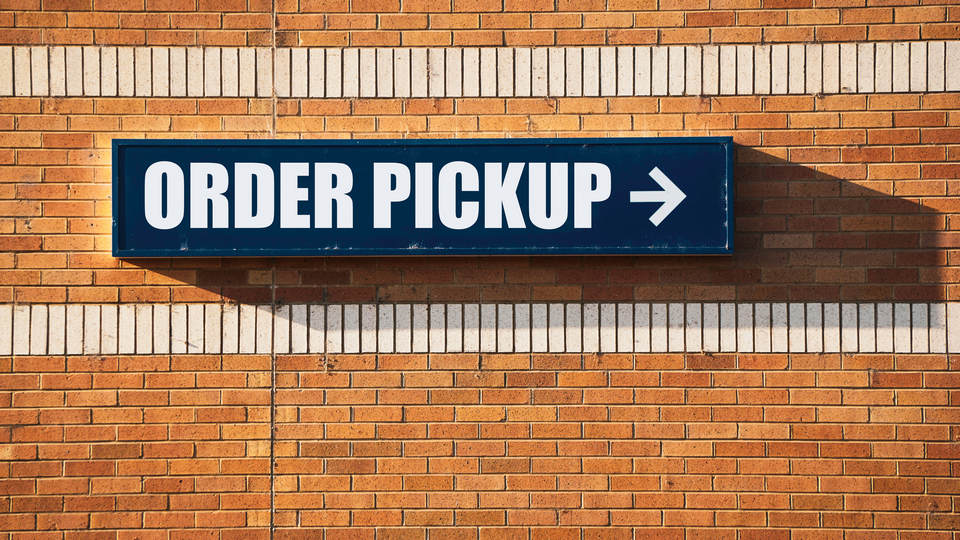Article
Upleveling the Shopping Experience with Fulfillment Services

It’s no secret that alternative fulfillment methods were the big winner of the COVID era. Between 2020 and 2021, the number of curbside pickup programs exploded. While only 6.6% of the top 1,000 retailers offered curbside fulfillment in early 2020, half of them had implemented the option by the same time the following year.
While some speculated that the popularity of these programs might fade as health and safety concerns waned, that hasn’t come to fruition. Omnichannel fulfillment services like “buy online, pickup in store” (BOPIS) and curbside pickup have remained just as popular as they were at the height of the pandemic. Our recent consumer trend survey, which sought to identify what shoppers will be looking for in the coming year, found that a significant portion of shoppers still use BOPIS (34%), “buy online, return in store” (27%), and curbside pickup (27%) regularly (at least monthly).
Furthermore, shoppers utilize omnichannel fulfillment services every day of the week—and at fairly consistent rates. Nearly half (46%) of those who use alternative fulfillment say they do so on weekdays and weekends, 29% said they use alternative fulfillment only Monday-Friday, and 24% said they use alternative fulfillment only Friday-Sunday. This shows a normalization of omnichannel fulfillment use throughout the week as the difference between weekend and weekday use has leveled out significantly since 2020.
For retailers, omnichannel shopping has blended well with the physical store, offering plenty of benefits and opportunities. In fact, the last few years have proved that BOPIS and other alternative methods have had the power to boost sales and improve shopper satisfaction. Heading into 2023, these offerings are poised to stay strong—and that’s a good thing for retailers.
Far from reducing consumers’ shopping trips or purchases, alternative fulfillment options are expanding brick-and-mortar’s reach. In our survey, more than half (51%) of respondents said they were very or moderately likely to make impulse purchases when leveraging these fulfillment methods. Furthermore, these services have allowed traditional retailers to compete with online shopping in new ways. Placing a BOPIS order allows shoppers to get the immediacy of in-person shopping with the same peace of mind that the item they want is the item they’ll get they enjoy with online orders.
Want to know what’s next for retail? Read Looking Ahead to 2023 to learn more about the retail trends we expect to see ramp up in the new year.
Supporting Omnichannel Experiences with Data
This year will be all about retail’s fundamentals: availability, convenience, and price. Consumers aren’t interested in an experience if it doesn’t offer those qualities. With that in mind, retailers may want to evaluate how they structure their omnichannel programs. Many of these offerings were designed with virus mitigation in mind, but now there are other factors that have more sway over shoppers. After all, in our Holiday Consumer Sentiment Survey, 63% of respondents noted convenience—not health and safety—as their primary motivation for using BOPIS or curbside pickup.
Retailers looking to help their omnichannel programs meet the mark may want to start by reviewing source data related to BOPIS and curbside sales. Investigating the types of products customers are buying, the additional items they’re adding on, and the timeframe that they’re most likely to use the program can help streamline the experience. Using shopper traffic data, computer vision-enabled cameras, and radio-frequency identification (RFID) can help retailers optimize staffing, ensure wait times are kept to a minimum, and provide confidence that ordered items are in stock when customers arrive.
Those who want to go above and beyond in this regard may want to extend their programs with mobile applications that enable more streamlined fulfillment options. Features like real-time order tracking, traffic monitoring, and inventory data can help make omnichannel experiences more satisfying. These apps can also leverage shopper behavior and demographic data to facilitate better loyalty programs complete with personalized promotions and more.
Read more about how consumer behaviors and preferences will shape retail in 2023 through digitalization and sustainability.
Takeaways
To learn more about how Sensormatic Solutions digital offerings are leading the future of retail, visit booth #6305 at the 2023 NRF convention, January 14-17 at the Jacob K. Javits Convention Center and follow #SensormaticNRF2023 on Twitter and LinkedIn. To request a booth tour or a meeting with your account manager, visit our scheduling page.
Survey Methodology
Sensormatic Solutions collected responses from 1,000 U.S.-based consumers, 18-years and older, via a third-party provider to determine findings of its 2022 NRF Consumer Sentiment Survey. The survey was conducted between October 24 – October 25, 2022.
Explore Related Topics

